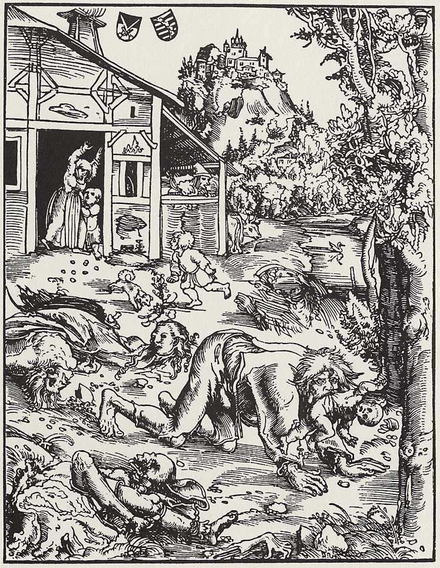The official definition of Lycanthropy? “A delusion that one has become a wolf,” or “the assumption of the form and characteristics of a wolf held to be possible by witchcraft or magic.” Basically, it’s the werewolf that’s become a common fixture in not just horror, but cinema in general. There’s something truly terrifying about this half-man, and half-wolf creature that brings bloodshed wherever it goes. Perhaps it’s the fact that this affliction usually happens to a helpless man – in the wrong place at the wrong time as he’s bitten by a mysterious creature and becomes a monster right before his own eyes. Or the fact that lycanthropy dates back to centuries-old folklore, and many believe that the wolfman isn’t just a symbol of cinema… but a real-life terror that walks among us. Here’s what you need to know about the phenomenon of lycanthropy.

Where did Lycanthropy Originate?
Where does the legend of lycanthropy, or werewolves, originate? It’s complicated. Like many mythical creatures, the werewolf is a widespread concept in European folklore… was a critical part of stories told throughout the Medieval Period. However, the witch hunt (literally) for werewolves began during the Late Middle Ages and the Early Modern period alongside the witchcraft trials. According to Wikipedia, “the trial of supposed werewolves emerged in what is now Switzerland in the early 15th century and spread throughout Europe in the 16th, peaking in the 17th and subsiding by the 18th century.”
Being accused of witchcraft is one thing, but accusations of lycanthropy were quite literally a whole other beast. While many believed that you could become a werewolf by being bitten by one, others believed that lyncathropy took place by sleeping under the full moon or eating the wrong type of meat. In her book “Giants, Monsters, and Dragons,” folklorist Carol Rose notes that “In ancient Greece it was believed that a person could be transformed by eating the meat of a wolf that had been mixed with that of a human and that the condition was irreversible.” Yikes.
Accusations of Lycanthropy
While the accusations are featured in less textbooks and movies than those of witchcraft, they were very much alive for centuries. One of the best known cases is that of Peter Stumpp, who was accused of werewolfery, witchcraft, and cannibalism in the 16th century. Known as “the Werewolf of Bedburg,” he had a violent and brutal history of torture, murder, and eating everything from goats and lambs to human children. After a grotesque execution where he had flesh torn from his body, limbs broken in multiple places, and was beheaded before being burned… his lyncathropy story became one of the most famous in history.
That being said, Peter Stumpp was a special case. And like the Salem Witch Trials, it’s safe to say that most accused of lycanthropy were not actually werewolves. Or were they? Many genuinely believed that werewolves walked among us centuries ago… and they remain a common presence in the gothic fiction and horror genres. We all love a good werewolf movie, but it becomes a bit darker after learning the fascinating history of lycanthropy.

I am a lifelong pop culture junkie with immense passion for all forms of art and entertainment. On a typical weekend, I can be found at a concert or musical, chasing ghosts on the Haunted Mansion at Disneyland, or watching way too many makeup tutorials on YouTube.

